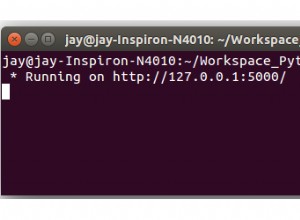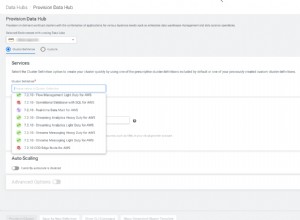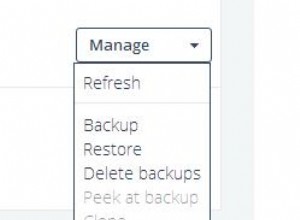Nie przechowujesz połączeń po stronie serwera. Po prostu ustawiasz je na serwerze, aby komunikowały się bezpośrednio z serwerem. Jeśli chcesz, aby wiadomości trafiające na serwer były wysyłane z powrotem do wszystkich, musisz skonfigurować .on('message', ...) funkcja dla każdego połączenia na serwerze, aby mieć to zachowanie. Aby to zrobić, musisz przechowywać połączenia w miarę ich tworzenia. Spróbuj tego:
var WebSocketServer = require('websocket').server;
var http = require('http');
var server = http.createServer(function(request, response) {
console.log((new Date()) + ' Received request for ' + request.url);
response.writeHead(404);
response.end();
});
server.listen(5050, function() {
console.log((new Date()) + ' Server is listening on port 5050');
});
wsServer = new WebSocketServer({
httpServer: server,
// You should not use autoAcceptConnections for production
// applications, as it defeats all standard cross-origin protection
// facilities built into the protocol and the browser. You should
// *always* verify the connection's origin and decide whether or not
// to accept it.
autoAcceptConnections: false
});
function originIsAllowed(origin) {
// put logic here to detect whether the specified origin is allowed.
return true;
}
//create an array to hold your connections
var connections = [];
wsServer.on('request', function(request) {
if (!originIsAllowed(request.origin)) {
// Make sure we only accept requests from an allowed origin
request.reject();
console.log((new Date()) + ' Connection from origin ' + request.origin + ' rejected.');
return;
}
var connection = request.accept('echo-protocol', request.origin);
//store the new connection in your array of connections
connections.push(connection);
console.log((new Date()) + ' Connection accepted.');
connection.on('message', function(message) {
if (message.type === 'utf8') {
console.log('Received Message: ' + message.utf8Data);
//send the received message to all of the
//connections in the connection array
for(var i = 0; i < connections.length; i++) {
connections[i].sendUTF(message.utf8Data);
}
}
else if (message.type === 'binary') {
console.log('Received Binary Message of ' + message.binaryData.length + ' bytes');
connection.sendBytes(message.binaryData);
}
});
connection.on('close', function(reasonCode, description) {
console.log((new Date()) + ' Peer ' + connection.remoteAddress + ' disconnected.');
});
});




